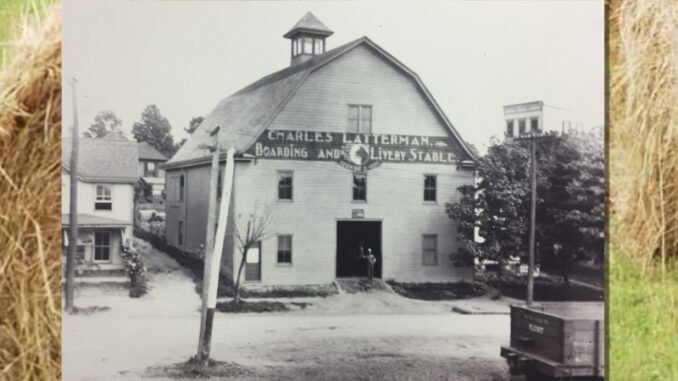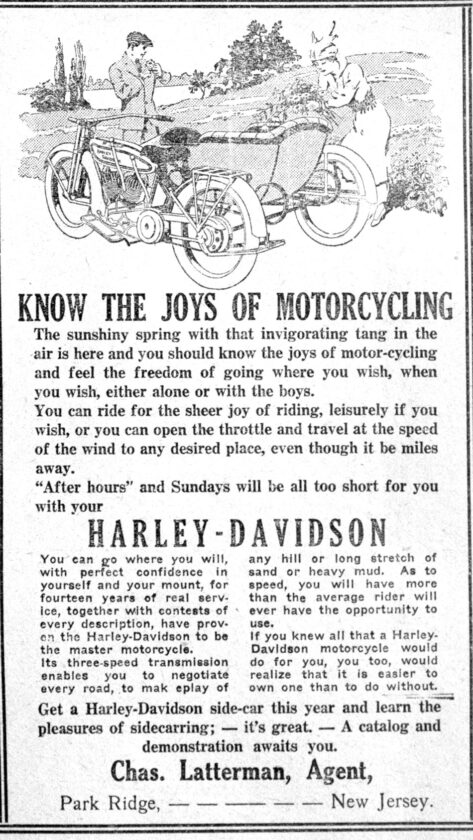
PARK RIDGE, N.J.—Talk about keeping up with the times! At the turn of the last century, most people who were traveling to the Pascack Valley from outside the region were doing so via the railroad. It was common in our local towns to find, in easy reach of the train station, various amenities that the weary wanderer might require. There would be at least one hotel, a general store, and the livery stable—a business where horses could be rented or boarded.
In Park Ridge, a short distance from the depot, Charles Latterman kept a livery stable on Broadway, just south of Park Avenue. The large, three-story, barn-like structure faced the railroad tracks. A knock on the Lattermans’ door would bring service day or night, as Charles and wife Ella lived in a house right next to the livery stable. Both structures have long since been torn down.
Charles stands in the doorway with a horse in the photograph above, which dates to around 1910. He was 30 years old at the time.
His father-in-law also was well known in Park Ridge: John H. Tiemeyer ran the general store at Depot Square (still standing, now Cyclesport). Park Ridge is a small town these days, and it was smaller then!
With the dawn of the 20th century, the first automobiles appeared on our local streets. What began as an expensive hobby for the wealthy grew to become a necessity of everyday life. In the beginning, horse-drawn wagons and early autos shared space on our roads. In 1920, a new law in New Jersey required lights on horse-drawn vehicles (white in the front, red in the back) to cut down on nighttime accidents between carriages and automobiles.
As motoring became the norm, it marked the end of the old livery stable. However, an advertisement that Charles Latterman placed in the Pascack Journal tells us he did not go down without a fight. He gave up horses and started selling hogs.
In the mid-1910s, Latterman became a registered Harley-Davidson dealer. The front-page ad, which features an illustration of a couple and a motorcycle with a sidecar, ran during the late spring of 1916.
“The sunshiny spring with that invigorating tang in the air is here and you should know the joys of motor-cycling and feel the freedom of going where you wish, when you wish, either alone or with the boys. You can ride for the sheer joy of riding, leisurely if you wish, or you can open the throttle and travel at the speed of the wind to any desired place, even though it be miles away,” the ad reads.
He and Ella put some miles on their own combination bike a few months later, when, in the summer of 1916, they rode all the way to Providence, Rhode Island, for the Federation of American Motorcyclists convention.
Harley-Davidson was still a relatively young company, having been founded 13 years earlier, in 1903. By 1916, it had become the largest motorcycle manufacturer in the world, overtaking rivals like Indian. The company produced over 20,000 motorcycles annually. Charles Latterman was one dealer in a network of more than 2,000 nationwide.
In 1916, a Harley-Davidson motorcycle cost about $250. That is equivalent to about $7,300 in today’s money. You won’t find anything on the showroom floor for that price in 2025!

